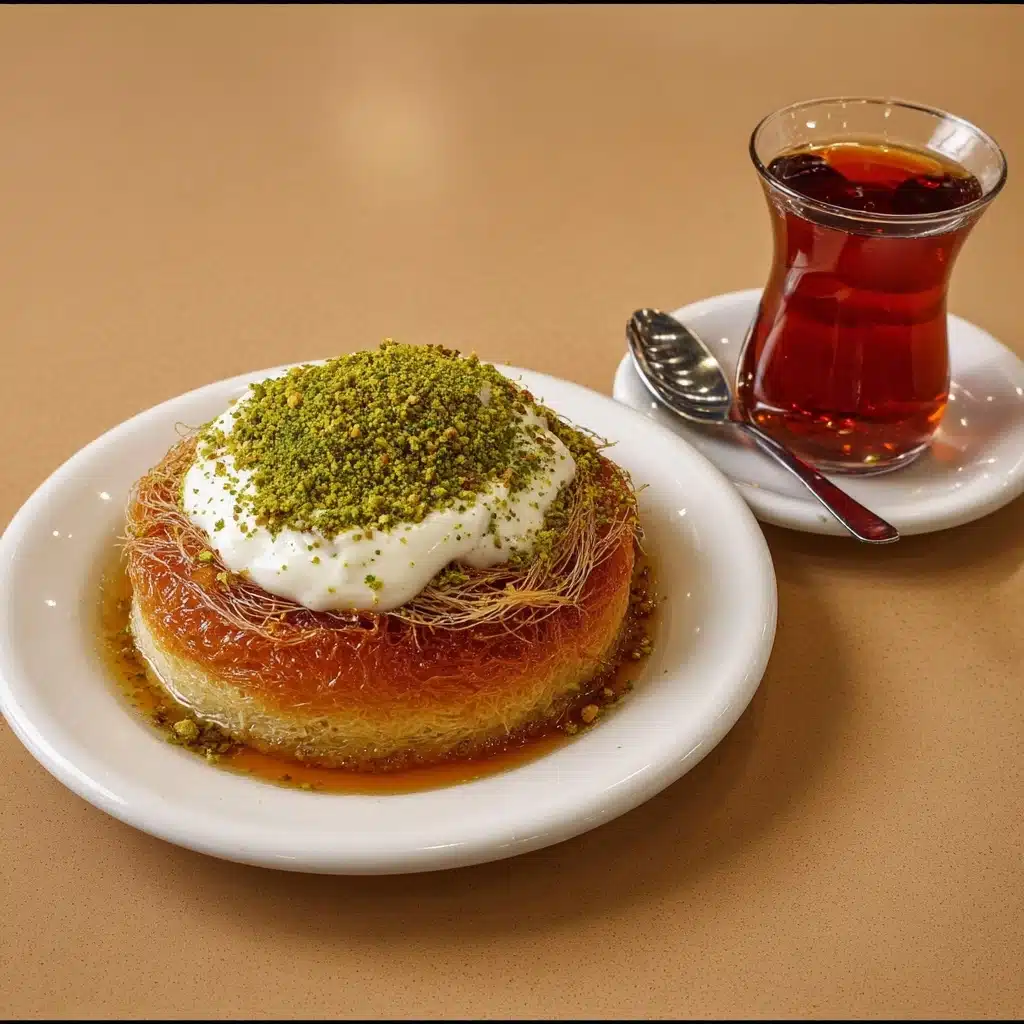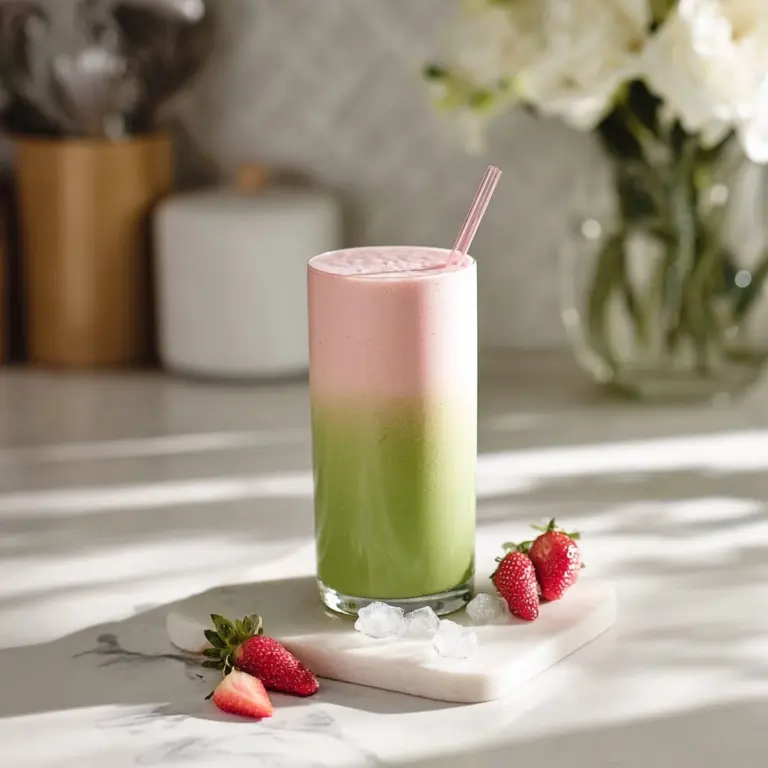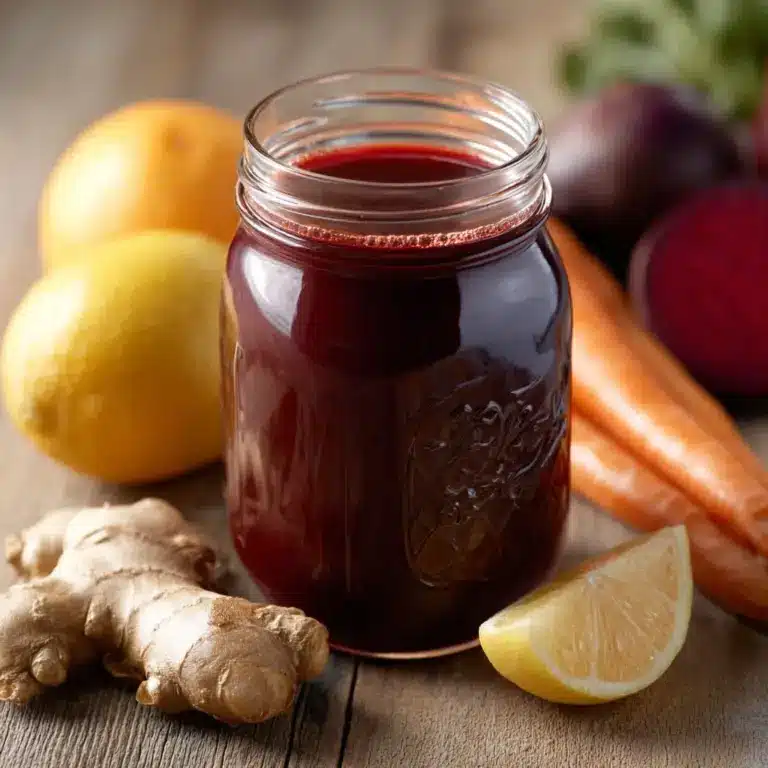Turkish Black Tea (Çay): History, Brewing, & Health Benefits Recipe
There’s nothing quite like sipping on a glass of Turkish black tea, or çay, with its signature red hue shining through a curved tulip glass. Brewing Turkish tea is less about following a rigid recipe and more about creating an experience—a quiet ritual that invites you to slow down and savor each moment. This guide is your key to mastering red Turkish tea the traditional way, complete with essential tips, treasured etiquette, and insights into the lively culture built around this iconic drink.

Ingredients You’ll Need
To make Turkish red tea, you’ll need just a few essential ingredients—each playing an irreplaceable role in creating the drink’s signature aroma, color, and warmth. Every addition matters, so choose quality ingredients for the most authentic cup.
- Loose Black Tea Leaves: Go for high-quality Rize tea if you can—these leaves infuse your tea with a deep, earthy flavor and that beautiful red tint.
- Fresh Water: Use only fresh, cold water; never re-boil what’s already been used since that can dull both the flavor and the vibrant red color.
- Çaydanlık (Double Teapot): The classic Turkish double teapot allows for slow, layered brewing, but a regular small and large saucepan stack works in a pinch.
- Tulip Glasses (İnce Belli): Essential for serving; their unique shape shows off the clear red tones and keeps tea hot for longer.
- Sugar Cubes (Optional): Serve on the side; in Turkey, adding sugar is common, but milk is never used in red Turkish tea.
How to Make Turkish Black Tea
Step 1: Boil the Water in the Bottom Kettle
Start your Turkish tea adventure by filling the bottom kettle of your çaydanlık with fresh, cold water. Bring it to a rolling boil over medium heat. This boiled water is the base for both steeping the red tea leaves and for thinning the concentrated brew to your liking.
Step 2: Add Tea Leaves to the Top Kettle
While your water is boiling, place 2 to 3 tablespoons of loose black tea leaves in the upper kettle (on top of the çaydanlık). Don’t use tea bags—true Turkish flavor comes from loose leaves, which unfurl and release their full, rich aroma for that signature red glow.
Step 3: Steep the Tea Gently
Once your bottom kettle is boiling, pour just enough hot water into the top kettle to cover the tea leaves. Let the leaves steep slowly over low heat for 15–20 minutes. The goal is to coax out a deep, fragrant concentrate without bitterness, giving your red tea complexity and fullness.
Step 4: Layer and Adjust the Strength
Time to pour! Add a small amount of the concentrated tea from the top kettle into your tulip glass—adjusting the amount depending on how strong you like your red tea. Complete the cup with hot water from the bottom kettle: more concentrate for a strong demli, more water for a lighter açık brew. Watch as the vibrant red color glows in your glass!
Step 5: Serve With Care and Enjoy
Serve your customizable Turkish red tea straight away, always in a tulip glass. Place a couple of sugar cubes on the side. Never add milk—it would only mask the warm, earthy flavors and distinct red color that make Turkish tea so special. Sip, relax, and savor the moment.
How to Serve Turkish Black Tea

Garnishes
The classic Turkish way is to serve your red tea clear and unadorned, letting its natural color shine. Offer sugar cubes on the side for guests to sweeten to taste, but resist the urge to add lemon or milk; it’s all about preserving the pure, earthy character and striking red tint.
Side Dishes
Red Turkish tea pairs wonderfully with a variety of treats. Try it alongside crunchy simit (sesame bread rings), slices of börek stuffed with cheese, or a rich dessert like künefe sprinkled with pistachios. These classic pairings enhance the tea’s flavor, making any tea time feel like a celebration.
Creative Ways to Present
For a showstopper, serve red tea in glass pitchers for guests to pour themselves at the table, or line up a tray of tulip glasses garnished with bright red rose petals. Sometimes I love to set up an informal tea bar, letting friends adjust the concentrate-to-water ratio and personalize their perfect cup. It’s interactive and turns tea brewing into a joyful, shared moment.
Make Ahead and Storage
Storing Leftovers
If you’ve brewed too much red tea, allow it to cool, then store in a glass container with a tight lid in the refrigerator. You can keep it for up to two days, though the depth of flavor is always best on day one.
Freezing
Freezing is not recommended for red Turkish tea. The complex flavors and beautiful red tones are lost once the tea is thawed, and the texture may become cloudy or flat. For the freshest taste, make only what you’ll drink within a couple of days.
Reheating
To reheat leftover red tea, pour it into a saucepan and gently warm over low heat. Avoid microwaving if possible, as it can alter the flavor and diminish that signature clarity. Stir well, pour back into your tulip glass, and enjoy as if it were freshly brewed.
FAQs
Is Turkish black tea always red in color?
Yes! One of the most iconic features of Turkish tea is its beautiful clear red color, which comes from the unique variety of black tea leaves and the traditional brewing process. The red tone is not just aesthetic—it signals the perfect infusion and flavor depth.
Can I make Turkish tea without a çaydanlık?
Absolutely. If you don’t have a çaydanlık, use two stacked saucepans: the bottom for boiling water, the top for steeping the leaves. The flavor and red color may vary slightly, but the ceremony and satisfaction are just as real.
Why is Turkish tea never served with milk?
Adding milk would cover up both the earthy notes and the prized red clarity of Turkish tea, and it’s simply not traditional. Turks believe the tea should be savored pure, highlighting its warmth and rich depth.
How do I prevent my tea from tasting bitter?
If your red tea turns out bitter, it’s likely from overheating or oversteeping the leaves. Use gentle heat and don’t rush—true Turkish tea gets its smoothness from patient, low-temperature brewing over 15–20 minutes.
What’s the best way to enjoy Turkish tea on hot days?
For summer, let your brewed red tea cool, then pour it over ice with a few fresh mint leaves. Turkish iced tea is refreshingly different while still letting that iconic red color and flavor shine through!
Final Thoughts
There’s a special joy in brewing and sharing Turkish red tea—one that goes far beyond taste. Each cup is a warm invitation to slow down, connect, and make something ordinary feel extraordinary. Give this time-honored tradition a try, and let the soothing ritual and beautiful red glow bring even more coziness and connection to your day. Happy brewing!
PrintTurkish Black Tea Recipe
Learn the history, brewing techniques, and health benefits of Turkish Black Tea (Çay), a traditional and beloved beverage in Turkish culture.
- Prep Time: 10 minutes
- Cook Time: 20 minutes
- Total Time: 30 minutes
- Yield: 4–6 servings 1x
- Category: Beverage
- Method: Brewing
- Cuisine: Turkish
- Diet: Vegetarian
Ingredients
Equipment:
- A çaydanlık (double-stacked teapot)
- Good loose black tea leaves
- Fresh, clean water
Tea Brewing:
- 2–3 tablespoons loose black tea leaves
- Hot water
Instructions
- Boil the Water (Bottom Kettle): Fill the bottom kettle with water and bring it to a boil.
- Put Tea in the Top Kettle: Place tea leaves in the upper kettle.
- Add Water & Start Steeping: Pour hot water into the top kettle with tea leaves.
- Steep Gently to Taste: Steep for 15-20 minutes.
- Pour and Adjust Strength: Pour concentrated brew into a tulip glass and add hot water to adjust strength.
Notes
- Use authentic Turkish tea leaves for the best flavor.
- Never reuse boiled water for brewing.
Nutrition
- Serving Size: 1 cup
- Calories: 0
- Sugar: 0g
- Sodium: 0mg
- Fat: 0g
- Saturated Fat: 0g
- Unsaturated Fat: 0g
- Trans Fat: 0g
- Carbohydrates: 0g
- Fiber: 0g
- Protein: 0g
- Cholesterol: 0mg
Keywords: Turkish tea, Turkish black tea, Turkish çay, çaydanlık, Turkish tea brewing








